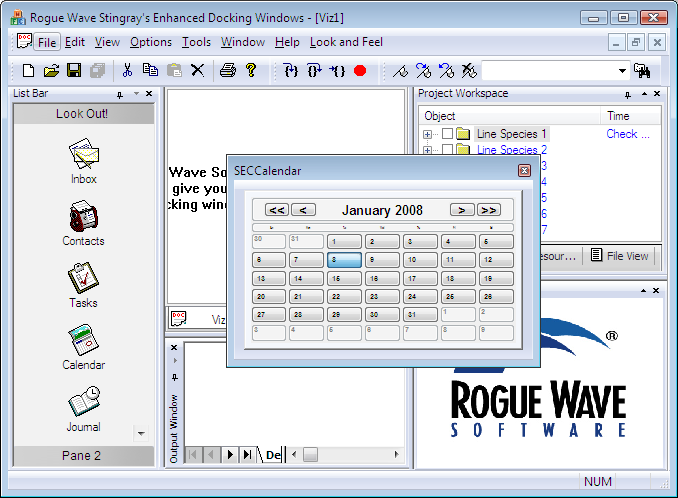Features of Docking Windows
The Objective Toolkit docking windows architecture adds a host of features to the existing MFC control bar architecture. When docked, you can resize dockable windows using splitter bars that are along the window’s edge. The following figure shows how docking windows appear when docked.
You can float docking windows in their own frames, outside the frame of the application.
Another significant feature added by the extended control bar architecture is the ability to float a control bar as an MDI child window and then turn it back into a docking control bar. When it is floating, a dockable window can be resized horizontally, vertically, and diagonally.
When it is floating as an MDI child, the docking window is clipped to the MDI application frame. Docking windows floating outside of the main frame are not constrained.
Each dockable window stretches automatically when resized. You can implement your own, alternate form of resize handling. In addition, each dockable window has a default context menu that you can access by right-clicking. The default context menu contains Hide and Allow Docking menu items by default. You can add or remove menu items from the context menu.



